Methylene Blue 101: What It Is, How It Works, and What To Know Before You Try It
By Supplement Reports Team
August 20, 2025
5 min read


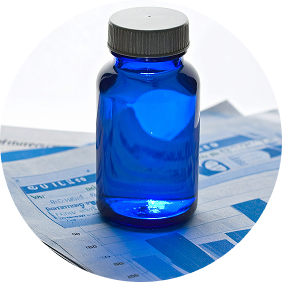
Introduction: The Resurgence of a Classic Compound

What Methylene Blue Is (in Plain English)
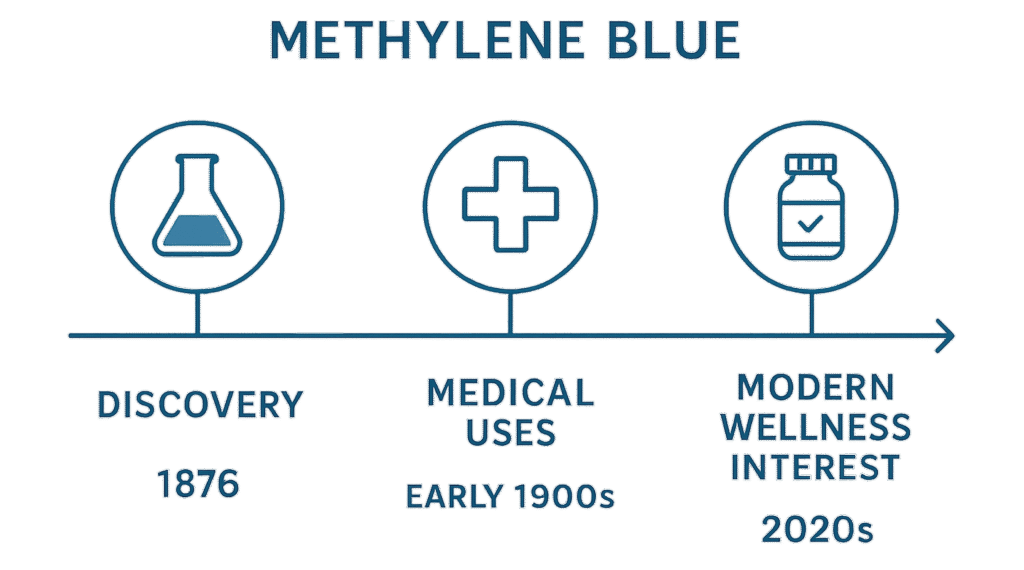
Historical timeline of methylene blue development
How It Works (The Simple Version)
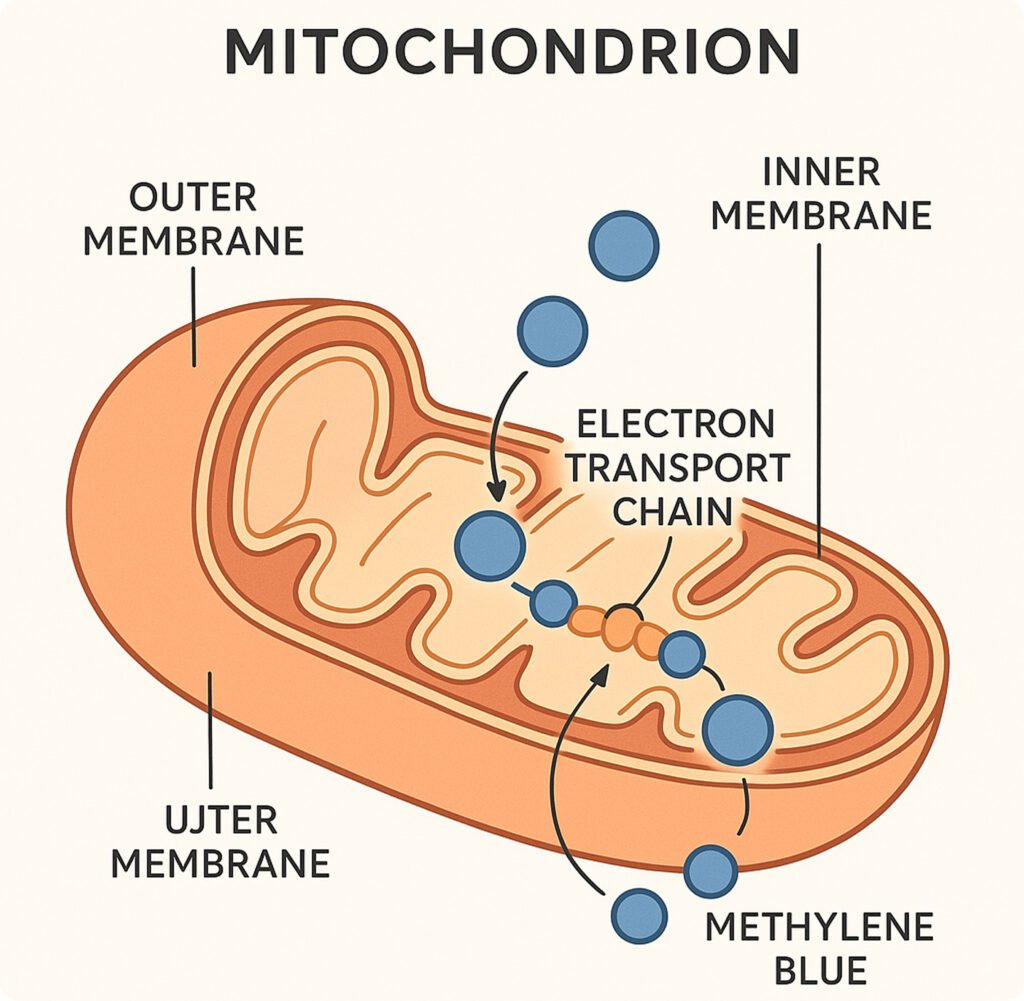
How methylene blue interacts with mitochondrial electron transport
Potential Areas of Research
Energy and Cognition
Mood
Neuroprotection
Methylene blue’s antioxidant properties and its ability to support mitochondrial health have led to research into its potential neuroprotective effects.
Safety Essentials & Who Should Avoid It
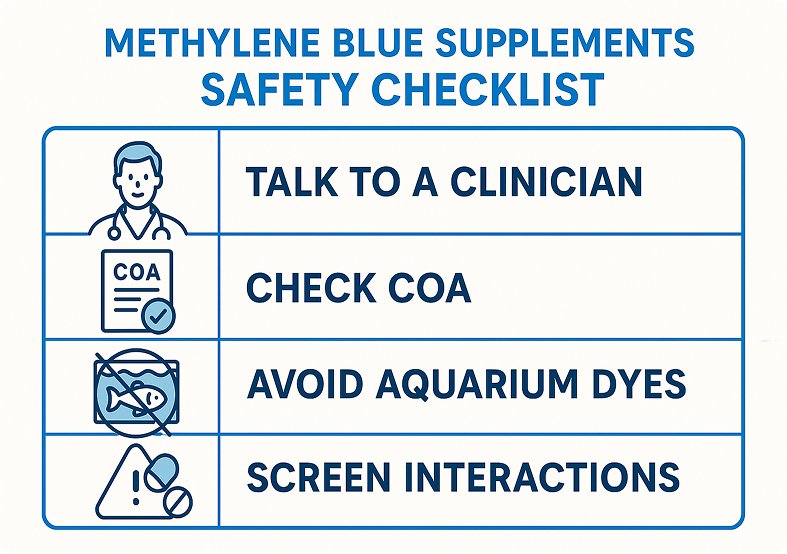
Essential safety checklist for methylene blue use
Critical Safety Warnings
Drug Interactions: Methylene blue is a potent MAOI, which means it can have serious interactions with serotonergic medications, such as SSRIs and other antidepressants. These interactions can lead to a life-threatening condition called serotonin syndrome.
Pregnancy and G6PD Deficiency: Methylene blue should be avoided during pregnancy and by individuals with G6PD deficiency, a genetic disorder.
Kidney Issues: Individuals with kidney problems should consult with a healthcare professional before using methylene blue.
Medical Guidance: Always consult with a qualified healthcare professional before starting any new supplement, including methylene blue.
Purity & Sourcing Checklist
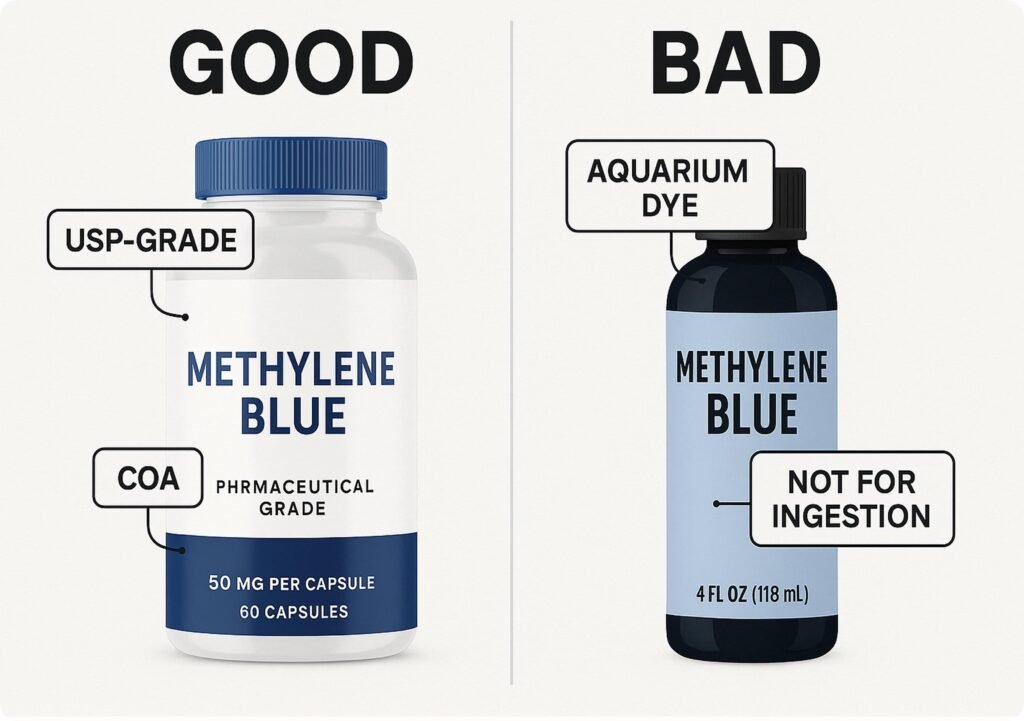
Good vs. bad methylene blue product comparison
Look For:
- USP/Compendial Grade certification
- Certificate of Analysis (COA) from third-party lab
- Proper packaging in amber glass containers
- Clear batch and lot information
Avoid
- Aquarium-grade products
- Vague "lab grade" claims
- Missing COA documentation
- Suspiciously low prices
Responsible Use Mindset
Track Your Responses
Talk to a Clinician
Avoid Aquarium-Grade Products
Never use aquarium-grade methylene blue, as it is not intended for human consumption and may contain harmful impurities.
Frequently Asked Questions
Will methylene blue turn my urine blue?
Yes, this is a common and harmless side effect. Your urine may appear blue or green for several hours after taking methylene blue.
Will it stain my skin or clothes?
Yes, methylene blue is a potent dye and can stain skin and clothing. Handle it with care and consider wearing gloves when handling the powder or concentrated solutions.
Can it interfere with lab tests?
Yes, methylene blue can interfere with certain lab tests, so it's important to inform your doctor if you are using it before any medical testing.
Is a low dose safer?
Starting with a low dose is always a good practice to assess your tolerance and response. Work with a healthcare provider to determine the appropriate dosage for your needs.
Key Takeaway
Methylene blue is a fascinating compound with a wide range of potential benefits. However, it’s not a magic bullet. Treat it with the respect it deserves, as a serious, research-backed compound. By understanding its mechanisms, potential applications, and safety considerations, you can make an informed decision about whether methylene blue is right for you.
Top Rated Methylene Blue Supplement
Methylene Blue Capsules (12mg)
9.8

(70 reviews)
- Supports brain energy, clarity, and mitochondrial health
- Enhanced with Cacao, Alpha Lipoic Acid, and MCT Oil Powder
- 12mg pharmaceutical-grade Methylene Blue per serving
- Natural ingredients, non-GMO, third-party tested
- Made in GMP facility for quality assurance
Show more
- Supports brain energy, clarity, and mitochondrial health
- Enhanced with Cacao, Alpha Lipoic Acid, and MCT Oil Powder
- 12mg pharmaceutical-grade Methylene Blue per serving
- Natural ingredients, non-GMO, third-party tested
- Made in GMP facility for quality assurance
Picked by ... people today
